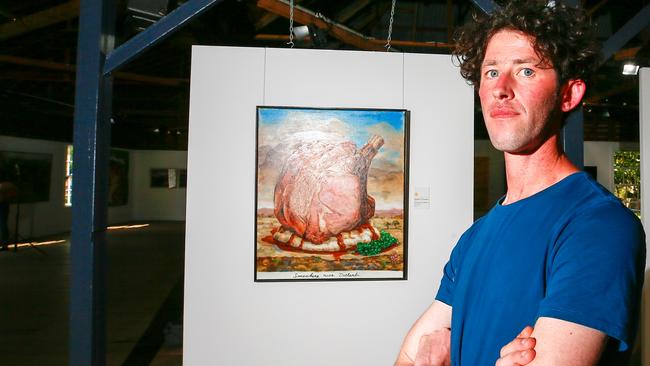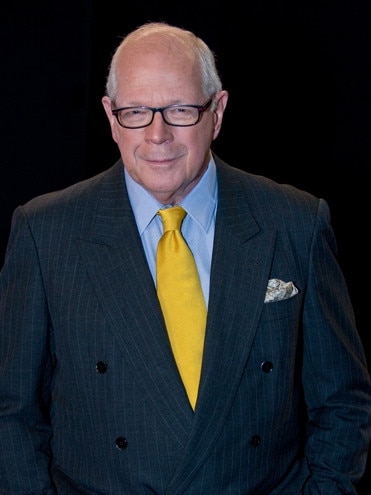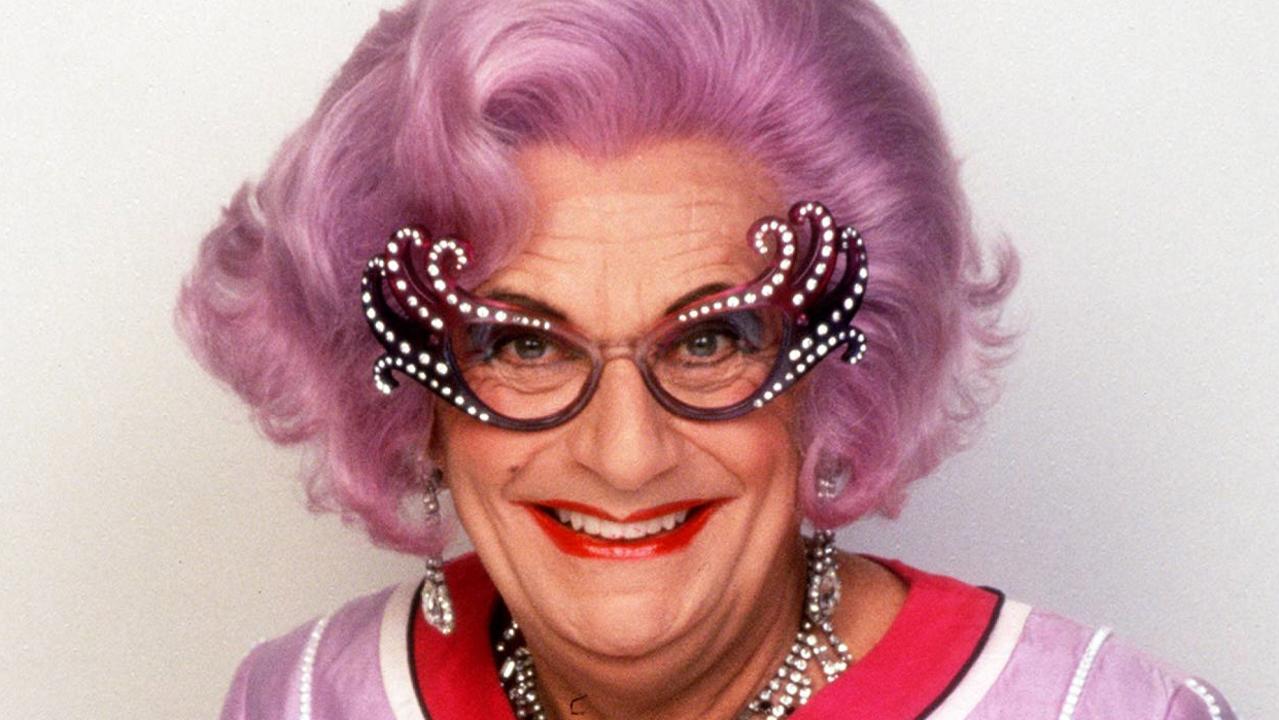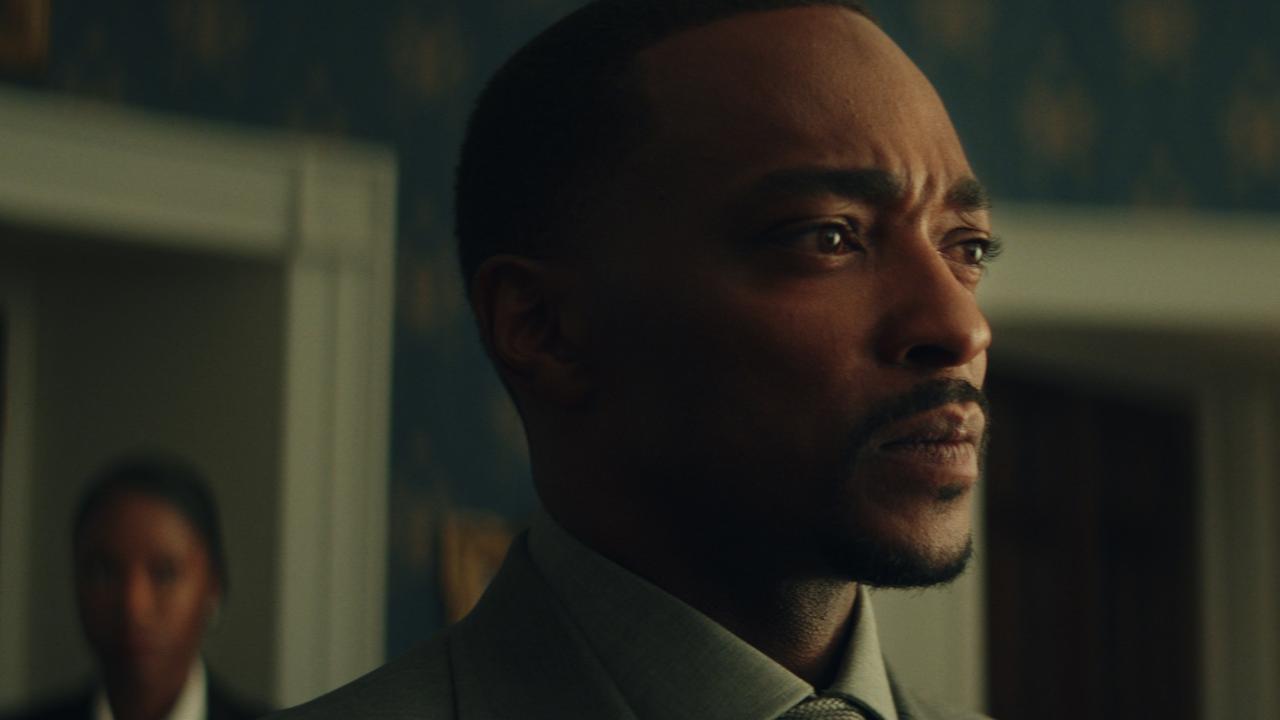Leo Schofield ruminates on the winning Glover Prize entry
Leo Schofield gives his verdict on this year’s controversial Glover Prize winning painting.

Entertainment
Don't miss out on the headlines from Entertainment. Followed categories will be added to My News.
Was it a leg of lamb? Or, as the Mercury described it, a ham, cross-cut to reveal juicy pink flesh? The more general consensus was that it was beef, a standing rib roast, atop a mound of mash with rivulets of gravy down all sides and a meniscus of green peas to the right, positioned centrally in a Midlands landscape. It certainly was an expensive cut of meat. Fifty thousand dollars worth.
A former Glover Prize judge saw Robert O’Connor’s 2020 winner as a work in the grand surrealist tradition of Max Ernst, Rene Magritte or Yves Tanguy. Other visitors invoked a less erudite comparison.
GLOVER PRIZE WINNER WAS ‘TAKING THE PISS’
As usual, Evandale’s annual art-fest caused a stir. And drew metropolitan-sized crowds to the Falls Pavilion to view the 40-odd pictures selected from the 563 local, national and international entries in Australia’s esteemed prize for landscape painting.
Sydney’s Wynne Prize is older. It was inaugurated in 1897, but has always played second fiddle to the celebrated Archibald Prize for portraiture.
On the other hand, the stand-alone Glover, as it’s known, has in a mere 17 years equalled it in importance — and virtually put Evandale on the map.

Mighty oaks from little acorns grow, and it was from an acorn of an idea that the Glover has grown in substance and significance.
Earlier this century, the Evandale Agricultural Show was waning in importance and appeal. Closure loomed. But there was money in the kitty, and ideas for a replacement event were bandied about. One was for an annual art prize to honour the most famous local, English painter John Glover, who had migrated to Tasmania, arriving in Hobart on his 64th birthday. Later he lived and painted in a house at Deddington. His dwelling, complete with skillion-roofed studio, he named Patterdale Farm after an eponymous site in Britain’s Lake District, and he lived and painted there until his death in 1849.
With a change of location, the Claudean vistas for which he was famous in the UK morphed into the Tasmanian landscapes, English oaks replaced by what leading Glover scholar David Hansen describes as the “twisting spindly limbs of Tasmanian eucalypts”.
In 2004 Hansen, then senior curator of art at the Tasmanian Museum and Art Gallery in Hobart, assembled the landmark Glover exhibition shown through Australia. The artist’s reputation, always high, was consolidated and the Glover Prize inaugurated.
Living in Tasmania at the time and writing for the Mercury, I was invited to be guest speaker at the very first Glover 17 years ago, driving in my ex-RACT Toyota ute from Kempton to Evandale and remarking en route on the particular and seductive late-afternoon light, clouds like salmon, shimmering mauve and pink-bellied against the pale blue sky. A Glover sky if ever there was one.
I have attended 16 of the past Glovers. How pleasing to be back there again last weekend to admire the burgeoning numbers, the dedication of the platoon of volunteers, and the palpable local pride in the event — and the adjunct activity.
MORE NEWS:
TASSIE MUST ‘STEM THE BLEEDING’ OF DARK MOFO LOSS
WALKWAY TO PROVIDE STELLAR VIEWS
A civic-minded Launceston couple has bought Patterdale Farm and restored it impeccably, identifying the original plants and recreating the garden to the loftiest horticultural standards. Alas, the two greatest testaments to Glover’s presence in Tasmania, the images of his house in Hobart and his masterpiece, the painting of his beloved Patterdale, are in museums on the mainland.
But there is a fine painting in the drawing room of nearby Clarendon, Tasmania’s grandest National Trust house. It’s a metaphor for Glover’s two loves, the “green umbrageous mass’’ of a mighty oak tree, which he first sketched in England and later recreated as a fully realised oil painting in distant Tasmania.
The 2020 Glover Prize paintings are on show at Evandale this weekend.
Leo Schofield is a Sydney-based journalist and cultural commentator, former long-term resident of Tasmania, and founder of Hobart Baroque.


